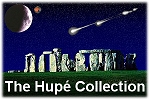

Authenticity & Appraisal
Science
Images
Press
The NASA manned Apollo missions in the late �60s and early �70s returned samples of the Moon that gave us an exciting insight into the Moon�s evolution and geologic history. Over the last three decades a very limited amount of lunar meteorites have been recovered from the Antarctic ice fields and the Earth�s deserts. The complexity of the Moon demands samples from widespread regions in order to obtain additional knowledge of the lunar evolutionary continuum. Study of both Apollo samples and lunar meteorites work in concert to accomplish dedicated scientific objectives.
In 2007, an extraordinary and unique lunar meteorite, officially referred to as Northwest Africa 5000 or NWA 5000, was recovered from the Western Sahara, Moroccan desert. The recovered mass of this magnificent meteorite at 11.53 kg (25 lbs 6.6 oz) is currently larger than any returned Apollo sample and is a unique example of a previously unknown lunar highlands feldspathic leucogabbroic breccia with impact melt. The awe-inspiring appearance of this rock from the Moon is shown in the enclosed photographs. The surface shows an exceptional assemblage of well-preserved regmaglypts (flight markings due to atmospheric entry), areas of multi-colored, translucent fusion crust, and attractive desert patina. The interior is a contrasting mass of white to gray gabbroic rock fragments set against the black, fine-grained matrix. Bright specks of metal are present throughout the beautiful collage and are pieces of an asteroid that struck the moon in ancient times. The dramatic appearance of NWA 5000 strikes the layperson and professional alike. For example, samples of the stone and its scientific attributes, were shown and discussed at the 39th annual meeting of the Lunar and Planetary Science Conference, held under the auspices of NASA, Johnson Space Center and the Lunar and Planetary Institute, Houston Texas. Most of the world�s renowned lunar scientists in attendance were astonished with NWA 5000�s appearance and scientific attributes. The overwhelming consensus among the scientists was that NWA 5000 is the most significant lunar sample ever received, which makes NWA 5000 an instant International treasure.
Plans are being set for a NASA sponsored research consortium of international scientists due to NWA 5000�s unique and intrinsic scientific significance. NWA 5000 would be the first privately held lunar meteorite to be so utilized. is known to have originated from a previously unsampled region of the lunar highlands, which is the differentiated shell of the Moon. The presently held hypothesis on the origin of the Moon is that the Earth gave �birth� to the Moon after a cataclysmic collision between the Earth and a rogue Mars-sized body, named Theia, early in the evolution of the solar system. Following this collision, pieces of the Earth and Theia were accreted into a body that is now our Moon. Study of the lunar highlands is key to supporting this hypothesis and NWA 5000 is a critical specimen for providing clearer understanding of the lunar highlands, in addition to contributing to other lunar research endeavors.
Home |
Introduction |
Terrestrial History |
Extraterrestrial History |
Observations |
Feature Summary |
Reasons to Consider |
About Us
Contact Us |
Links & References |
Certificate of Authenticity |
Formal Appraisal |
IRS Appraiser Document |
Provenance & Legality
ROM Press Release |
ROM Display Agreement |
Petrology & Composition |
Meteritical Society Entry |
Impactor Metal
40Ar-39Ar Age |
Exposure History |
Density & Porosity |
NASA Lunar Compendium
Photo Gallery |
Video |
Site Map
Copyright © 2010-2011, The Hupé Collection